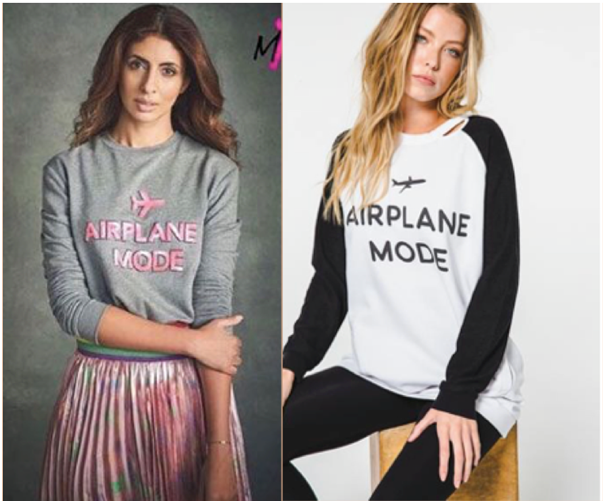Any successful café, restaurant, or retail establishment's environment is greatly influenced by its music. It…
Fashion & Intellectual Property
“Fashion is not something that exists in dresses only. Fashion is in the sky, in the street, fashion has to do with ideas, the way we live, what is happening.” – Coco Chanel
Fashion industry is at an all-time high and the present size of the market is a $US1 Billion. Many established players together with new designers are operating within the market. One of the key factors leading to the growth of successful fashion houses and of the fashion industry in general is the brand consciousness and the bond which is shared between the customers/clients and the fashion houses. The bond that fashion houses develop with their clients can be attributed to the popularity of their logos or house marks. Consequently securing these logos becomes paramount for these fashion houses.
Introduction of Intellectual Property (IP) in Fashion Industry
Many brands within the fashion industry guard their logos or emblems under “Trademark Law.”However, most of these brands do not pay adequate amount of attention to other intellectual properties that they create in course of their business which should also be protected, for example, fashion layouts. A fashion enterprise spends huge sums of money and time to create new and authentic layouts each season. There are many steps that a designer or a fashion house may take to secure the rights over an original fashion layout or design, but before that let us appreciate the importance of securing such rights. The following incidents which were well captured by the various news reports will clearly highlight the importance of securing such rights:
- The 2018 cruise collection of Christian Dior which Sonam Kapoor Ahuja wore for the Elle India cover was allegedly copied from Indian Designer Orijit Sen. According to designer Orijit Sen, one of the co-founders of People Tree, the print on the Dior dress was a blatant rip off of Sen’s brand that he had created and began selling more than 10 years prior and is still producing in 2018. Further, he says “he had never worked with Dior or any other major fashion brand.” He also says he was“never approached by Dior or any other related label for permission to use the design.” Now Dior and Mr Sen have managed to come to a settlement for an undisclosed amount.
- Another incident is from 2017 when the designer Rahul Mishra sent a legal notice to a high-end clothing brand alleging plagiarism.
- Yet another incident of plagiarism involves the allegation that Shweta Bachchan Nanda and Monisha Jaising’s fashion label MxS copied the laundry room “AIRPLANE MODE” sweatshirt design.
Now let us understand how IP rights can reduce risk and enhance competitiveness of all types of businesses in the fashion industry.
Copyright: Copyright is first and most crucial IP on the subject of fashion industry. Copyright guarantees protection for artistic work to artists and designers. The most important criteria for securing a copyright are originality and uniqueness. Why should Copyright be the first choice of IP in fashion industry?
- Rights over copyright will start from the day the work is created. (As fashion trends may change seasonally, having a right from first date would be great)
- Copyright is secured almost globally (139 countries) thus it is not bound geographically.
- Term of copyright is lifetime of the artist plus 60 years from the year in which artist dies.
- Remedy against infringement lies in criminal law as well as under civil law.
Designs: According to The Designs Act, 2000, which is a law enacted by the Indian Parliament, a design means only the features of shape, configuration, pattern, ornament or composition of lines or colours applied to any article whether in two dimensional or three dimensional or in both forms, by any industrial process or means, whether manual, mechanical or chemical, separate or combined, which in the finished article appeal to and are judged solely by the eye; but does not include any mode or principle of construction or anything which is in substance a mere mechanical device, and does not include any trademark or property mark or any artistic work.
Thus, The Designs Act, 2000 covers all articles of clothing, haberdashery, garments, head wear, footwear and many others. Registration of design is a vital device in the hands of stylists, fashion designers and the entire fashion industry to secure the rights over their new and original fashion layouts, designs etc. In this regards, Section 22 of The Designs Act, 2000 clearly states that during the existence of copyright in any design it shall not be lawful for any person:
(a) for the purpose of sale to apply or cause to be applied to any article in any class of articles in which the design is registered, the design or any fraudulent or obvious imitation thereof, except with the license or written consent of the registered proprietor, or to do anything with a view to enable the design to be so applied; or
(b) to import for the purposes of sale, without the consent of the registered proprietor, any article belonging to the class in which the design has been registered, and having applied to it the design or any fraudulent or obvious imitation thereof; or
(c) knowing that the design or any fraudulent or obvious imitation thereof has been applied to any article in any class of articles in which the design is registered without the consent of the registered proprietor, to publish or expose or cause to be published or exposed for sale that article.
Trademark: The aforementioned example of AIRPLANE MODE sweatshirt clearly highlights the importance of trademark protection in the fashion industry.Trademark registration helps in providing an exclusive legal right that stops any third person from using a quote or phrase which is similar to the registered trademark. Securing the rights over a brand name by filing for the registration of trademark is also very important part of any commercial enterprise. Thus, trademark is another IP that fashion enterprises must become aware of and must look into.
Trademark (Shape): Further, a distinctive shape of an article can be protected under the trademark law in India. Trademark shape is crucial for footwear, bags etc.
Fashion Industry is booming and therefore all the players in the industry must realize the importance of IP in securing their designs and products from infringement. Ralph Lauren once said, “I don’t design clothes. I design dreams. “No one should let anyone else copy their dreams.
All views expressed in the blog are my own and do not constitute the opinions of any entity in any way with which I’ve been, am now or could be affiliated.
Author: Paras Khurana, IP Attorney at Khurana & Khurana, Advocates and IP Attorneys. In case of any queries please contact/write back to us at [email protected].




